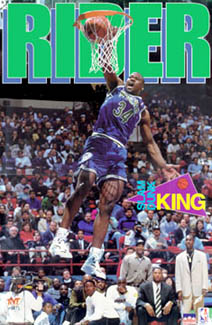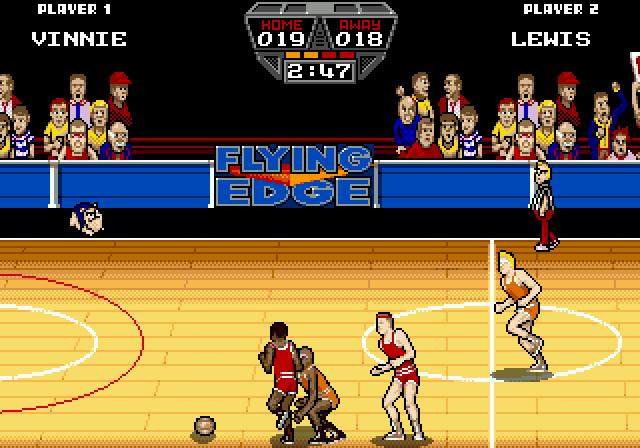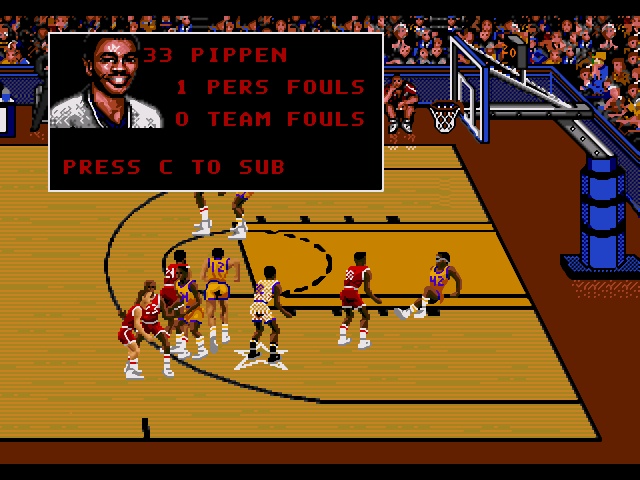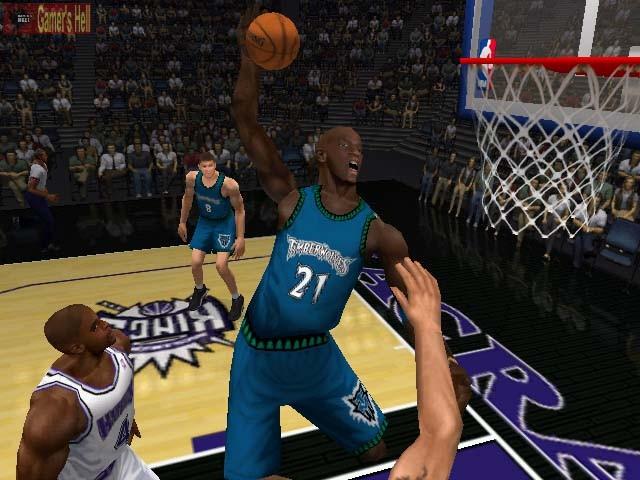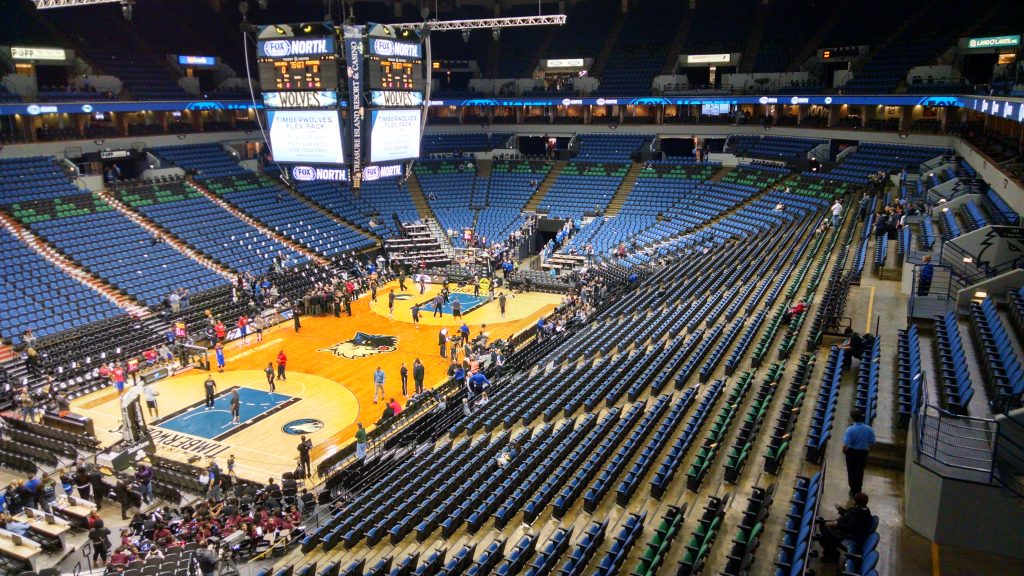From the Court to the Console: A Basketball Retrospective
Basketball and video gaming were equally important parts of my own upbringing in suburban Minnesota. It was driveway hoops with my best friend every day from the moment we got out of school until the sun went down – and often even later. The collared dress shirts our mothers bought us stayed in the closet as we preferred to show up to school sporting our favorite NBA stars’ duds. My friend’s favorite was the iconic black pinstriped number 45 Michael Jordan jersey; I preferred my number 55 navy blue Dikembe Mutombo road uni.
Two of my favorite childhood moments were curated by the game of basketball. When I was eight years old, my dad took me to the Target Center to see the Timberwolves take on the Atlanta Hawks. The group of men that trotted out onto the parquet that night were amongst my greatest childhood idols. I was particularly excited to see a rookie forward named Kevin Garnett, and I even had a brief encounter in the loading area with Isaiah Rider, who at that point was immortalized on my wall in poster form.
He totally brushed off my attempt to greet him, but whatever. He was Isaiah fucking Rider, one of the sickest dunkers walking the planet. He didn’t have to acknowledge a chump kid like me. It made him that much cooler in my eyes.
Around the same time, I was on a routine grocery shopping excursion with my father when I spotted a radiant behemoth of a machine near the door on the way out.
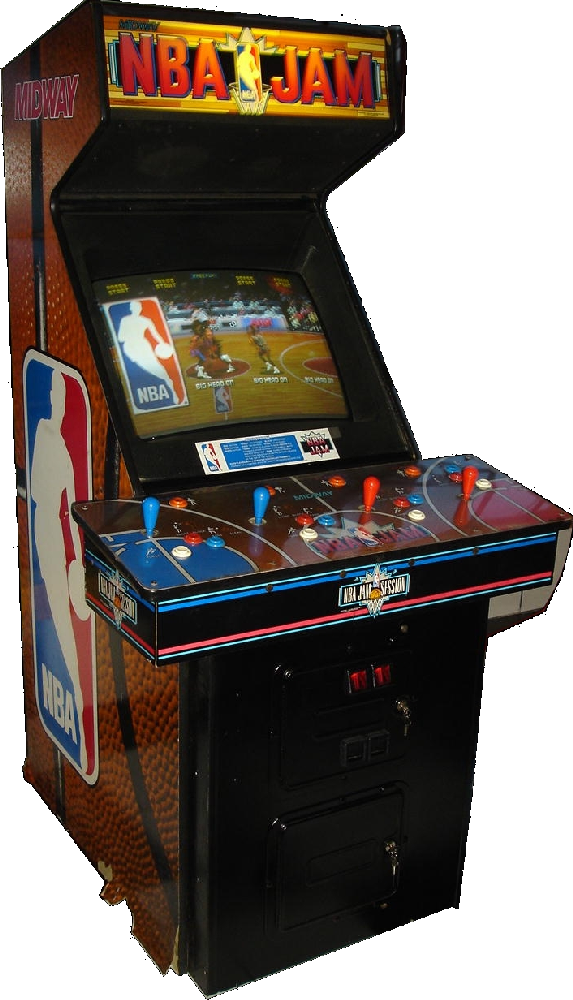
Pixelated sprites of my favorite NBA players – guys like Shawn Kemp, Larry Johnson, Clyde Drexler – scrolled across the screen and I begged my dad for quarters so we could play it. Being a champion of parenting, he walked back to the cashier and got change for a few dollar bills and we sat and played NBA Jam for half an hour while our cart of groceries sat, seemingly abandoned, in the corner of the store. It’s one of those weird, seemingly random events from my childhood that I remember in vivid detail.
Not only is it a cherished memory of my late father, it’s also one of the few specific moments I can point to that’s responsible for incubating my awful obsession with the electronic gaming medium that has somehow managed to thrive in the absence of childhood.
The original NBA Jam was not just a major hit among sport fans, it was a phenomenon – the arcade phenomenon of the 1990’s. It was a genius creation on the part of the now-extinct Midway Games. Inspired by the success of Capcom’s Street Fighter II and their own Mortal Kombat, they looked to further capitalize on the recent resurgence of arcade gaming. Combining the fast-paced, exaggerated gameplay that defined the concurrent fighting game trend with the NBA license was as much of a guaranteed success as a Mark Price free throw.
Predictably, the game razzle-dazzled its way into the hearts of every kid in the country following its release in 1993. A few years earlier, Midway released a similar type of game, Arch Rivals, into arcades with significantly less pomp. Lacking the NBA license and enormous amounts of hype surrounding the sport, the game was largely overlooked.
By the time NBA Jam was set to release, however, the game had changed. The sport’s preeminent superstar, Michael Jordan, was one of the most adored human beings on the planet. An influx of supremely talented, and perhaps more importantly, charismatic new players ushered in a grand new age of hoops action; more than adequately filling the void left by the retirement of Magic Johnson and Larry Bird.
With NBA Jam championing the larger-than-life aura surrounding these hardwood heroes, it established the NBA as more than a basketball organization. The NBA was its own brand of cool, with equal parts swagger and freak athleticism.
The NBA made Jam a hit, and Jam made the game of basketball a hot commodity in the video game industry.
There had been attempts, most of them severely clunky, at transposing the game of basketball on to home gaming consoles. Even early 16-bit attempts such as Bulls vs. Lakers and the NBA Playoffs failed to properly capture the intensity of its real-life equivalent. But when NBA Jam and its subsequent console ports conquered the gaming universe, it proved that sport could be fun – and profitable – on a raster screen.
While the far-fetched presentation of Jam won over hoops fans and gamers alike, it created a strong desire for a more realistic video game rendition of the sport. If you ask me, the fully realized basketball simulation didn’t truly begin to take shape until NBA Live series was created by Electronic Arts. NBA Live ’96, the series’ second entry, really upped the authenticity by adding faithfully rendered NBA arenas, seriously legit dunk animations (OK, they were about four frames long), in-depth stat tracking, detailed player creation – basically anything a hoops fanatic like myself could ever ask for.
It also had Shaq on the cover (who was not included in any of the home versions of NBA Jam) and contained one of the best cinematic intros ever:
It perfectly encapsulates the spirit of NBA basketball in the 1990s and features a sweet-ass slow motion shot of the very Isaiah Rider dunk that was plastered on my bedroom wall. Watching it now brings me back to weekends spent sitting in front of my computer, carefully plotting my Timberwolves’ championship-winning run by meticulously maximizing player production through ideal defensive match-ups in crucial game-deciding moments.
Or maybe I just forced the Rockets to trade me Hakeem Olajuwon for Sam Mitchell like a real dickhead.
As was the case with most everything in the 90’s, NBA Live ’96 was more or less irrelevant a year after its release due to competition wanting in on a share of the basketball boom. Titles like Microsoft’s criminally underrated Full Court Press and Sony’s NBA ShootOut arrived on the scene and provided a hoops-hungry audience with plenty of options.
Despite the feisty competition, NBA Live was still the go-to game for basketball diehards, but only until today’s reigning king of digital hoops arrived on the scene.
Sega, unfazed by EA Sports’ decision not to support the Dreamcast, unleashed the now-legendary NBA 2K series’ first installment of the same name in late 1999. While its initial showing was certainly impressive, it wasn’t until NBA 2K1 that the franchise took a Dominique Wilkins-esque leap forward by introducing online play for the first time in the history of the genre. All the hollering and trash-talking present in the real-life game was now part of the video game experience as players across globe could channel their inner Reggie Miller and verbally berate their opponent throughout the game. Okay, so the linguistic beatdown needed to be administered via keyboard input, but it was immensely satisfying nonetheless.
While my enthusiasm for the game of basketball has certainly diminished since my youth, the appreciation I have for its contributions to my love for gaming remain. Later tonight, I’ll be happily seated, as usual, in the Target Center cheap seats to watch my favorite squad begin a brand new season. I will look around and remember the times my dad took me to watch my hero, Kevin Garnett, become one of the greatest players the game has ever seen. I will remember the numerous times in college years, just after my dad had passed away, that I spent there looking for some sort of familiar comfort in a childhood passion.
And inevitably, after a monster dunk, I will stand up and scream “BOOMSHAKALAKA!!” as loud as I can because I don’t care if it’s been twenty years; it’s still the greatest one-liner in video game history.


